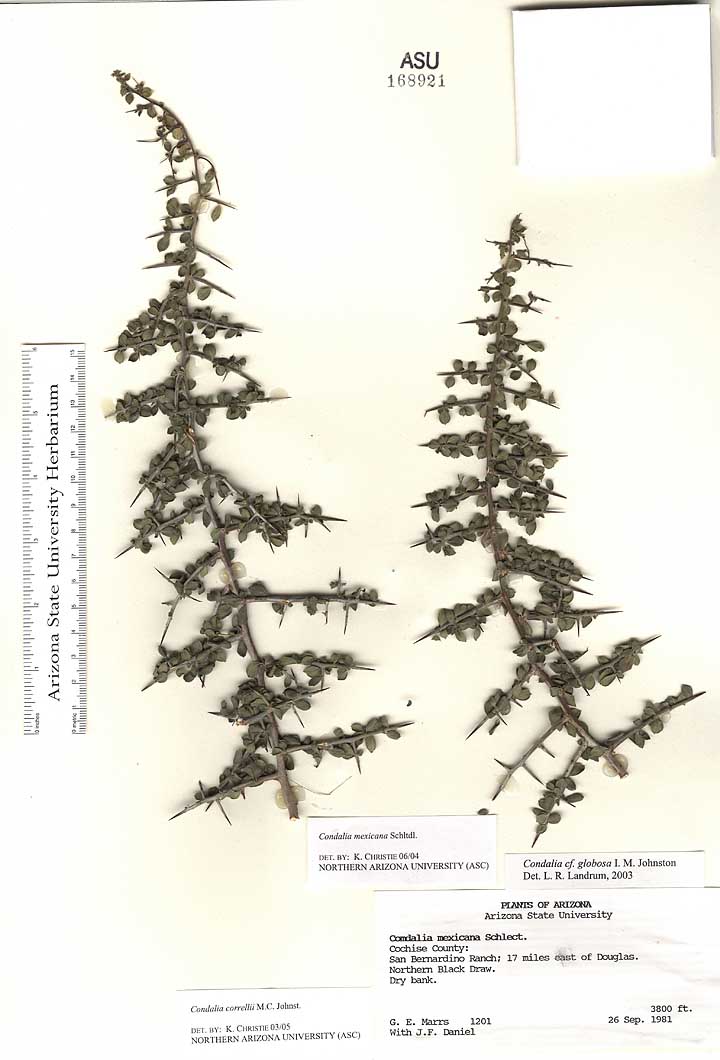
|
Rhamnaceae |
|
|
PLANT: Shrubs or small trees, unarmed or armed, with perfect flowers or less often monoecious. LEAVES: alternate, subopposite or opposite, solitary or fascicled, simple, deciduous or evergreen; stipules present; bud scales present or absent. INFLORESCENCE: of terminal or axillary cymose clusters. FLOWERS: actinomorphic, perfect or imperfect; sepals 4-5, triangular, deciduous or persistent (in Colubrina californica); petals (0-) 4-5, free, usually concave or hooded, clawed; stamens 4-5, in 1 whorl, opposite the petals and often enshrouded by them; filaments adnate to petals; nectar-disc well-developed; ovary superior or partially inferior, of 2-3 united carpels; placentation basal; style entire, lobed, or deeply cleft; ovules basal, 1 or 2 per locule. FRUITS: capsules or drupes with 1-3 stones, these 1(-2)-seeded. SEEDS: sometimes with a dorsal groove. NOTES: Ca. 50 genera, 875 spp., cosmopolitan but mainly tropical and subtropical. Rhamnus catharticus L. has been used as a potent purgative. Some AZ species are used medicinally by Southwestern Native Americans (Moerman 1998). REFERENCES: Christie, Kyle, Michael Currie, Laura Smith Davis, Mar-Elise Hill, Suzanne Neal, and Tina Ayers.2006. Vascular Plants of Arizona: Rhamnaceae. CANOTIA 2(1): 23-46. |
|
This project was made possible in part by the Institute of Museum and Library Services [MG-70-19-0057-19].
Powered by Symbiota


